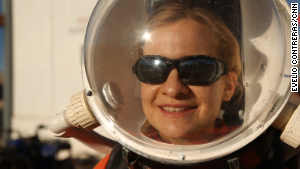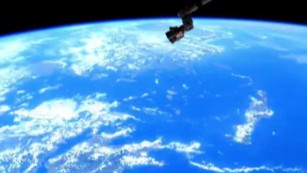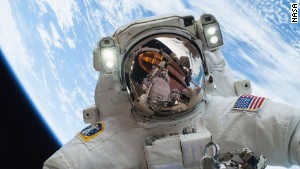Orbiting bacteria: Space Station may need some tidying up
The next time NASA picks an astronaut to live in the International Space Station, it might want to send Mr. Clean. That's because scientists using a kind of high-tech white glove test found something in the space dust there.
The astronauts are not alone, it turns out. They share tight quarters with some previously undetected, opportunistic bacterial pathogens.

See what it's like to live on Mars
They don't call this bacteria "opportunistic" for nothing, said Kasthuri Venkateswaranwho worked on the research at NASA's Jet Propulsion Laboratory and co-authored the paper in the latest issue of the journal Microbiome.
This bacteria, by its very nature, is "looking for an opportunity to become pathogenic," Venkateswaran said. Meaning these little pests are mostly innocuous on Earth, but under the extreme environment of space, it could behave differently. The DNA test researchers used to identify them could not determine whether the bacteria could hurt astronaut health, since it is based on a genetic analysis, but microgravity can change bacterial behavior, earlier studies showed.
Currently, astronauts spend six months on the space station, but as NASA eyes a much longer mission to Mars -- a journey that could take two years -- the agency will want to make sure its astronauts won't be exposed to anything that could harm them.
Out of an abundance of caution, it is worth monitoring more carefully, researchers said. Exactly how did the bacteria Corynebacterium (a bacteria that could cause respiratory infection) and Propionibacterium (bacteria that could cause acne) end up in the space station?
"Humans are great fermenters," Venkateswaran said. In other words, bacteria hitched a ride to see the galaxy on the astronauts' themselves. It's not that astronauts are bad bathers. It's that naturally we humans play host to tens of billions of mostly harmless bacteria
An earlier study found that when you enter a room, you add 37 million bacteria to the air for each hour you are there. Venkateswaran believes the bacteria became a freeloader on the payload. Cargo is cleaned, but apparently it may not be scrubbed enough.

See an orbit of Earth from space
Venkateswaran said these bacteria are not a new space station tenant. What's changed is the method used to find them. "This is the DNA age," Venkateswaran said. His team won the bid to use the latest DNA technology to "predict what is going on, rather than doing this using 100-year-old technology." In other words, they didn't want to bring a Progressive Era-weapon to a space age bacteria fight.
The team compared dust samples collected in an air filter and vacuum from the space station to cleanrooms based at the Jet Propulsion Laboratory on Earth. The bacteria were found in a much greater numbers on the station.
There are differences between the two environments other than their location. Cleanrooms circulate fresh air. The space station must recirculate the same air. While there are only six people at a time in the space station, they don't leave for months, as compared to the 50 or so people who typically use the cleanrooms and go in and out.

This astronaut would probably stay in space if she could
Using the latest DNA sequencing technology on these samples gave Venkateswaran's team a much more detailed sense of what was up there and now with this study, NASA has an established baseline for being able to monitor exactly how clean the space station is and the cleanliness of other spacecraft on future missions.
Developing a better biosensor for space may also one day have an Earthly application. Venkateswaran said it could lead to developing a better biosensor for commercial airlines, which might lead to better monitored, or maybe even healthier, air.
News Courtesy: www.cnn.com











